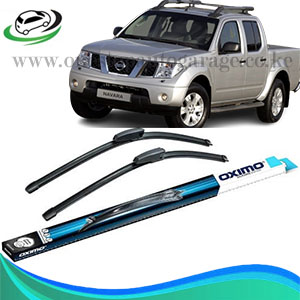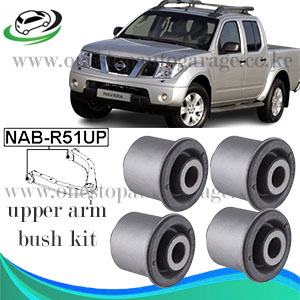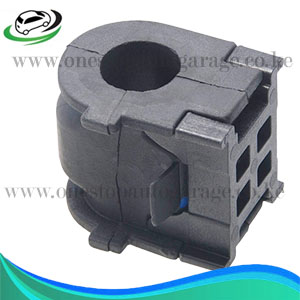-25%
Get Front Stabilizer Bush Mazda 6 GH-MZSB-GHF Febest
The stabilizer bushing, also known as the sway bar bushing or anti-roll bar bushing, is a critical component in a vehicle’s suspension system. It plays a significant role in stabilizing the vehicle during cornering and reducing body roll. Here’s an overview of its functions, signs of wear, and maintenance considerations:
Functions of Stabilizer Bushing
- Reducing Body Roll
Primary Function: Minimize body roll during cornering and sharp maneuvers.
Details:
- Force Distribution: The stabilizer bushing secures the stabilizer bar (sway bar) to the vehicle’s frame or chassis.
- Enhanced Stability: By limiting body roll, it improves the vehicle’s stability and handling, especially in curves and sudden turns.
- Improving Handling
Primary Function: Enhance overall handling and responsiveness.
Details:
- Reduced Sway: Helps maintain tire contact with the road surface, improving traction and reducing the risk of skidding.
- Steering Precision: Enhances steering response by minimizing body sway, allowing for more precise control of the vehicle.
- Balancing Suspension
Primary Function: Balance the suspension system to optimize performance.
Details:
- Symmetrical Force Distribution: The stabilizer bushing ensures that lateral forces are evenly distributed across both sides of the suspension.
- Promotes Even Tire Wear: By balancing the suspension, it helps promote even tire wear and prolongs tire life.
Signs of Worn or Failing Stabilizer Bushing
-
- Clunking or Rattling Noises
- Description: Audible noises, such as clunking, rattling, or knocking sounds, especially when driving over bumps or rough roads.
- Details: Worn stabilizer bushings can allow excessive movement of the stabilizer bar, causing it to hit against other components or the vehicle’s frame. This results in noise that varies with road conditions and vehicle movement.
- Increased Body Roll
- Description: Noticeable increase in body lean or sway during turns or maneuvers.
- Details: When stabilizer bushings wear out, they lose their ability to hold the stabilizer bar firmly in place. This allows more body roll, affecting vehicle stability and cornering performance. You may feel the vehicle leaning more than usual, especially during sharp turns.
- Uneven Tire Wear
- Description: Abnormal wear patterns on the tires, such as excessive wear on the inner or outer edges.
- Details: Worn stabilizer bushings can lead to misalignment of the stabilizer bar or uneven distribution of forces through the suspension system. This can cause tires to wear unevenly, affecting handling and potentially reducing tire lifespan.
- Steering Wander or Instability
- Description: The vehicle feels less stable or wanders, especially at higher speeds or when changing lanes.
- Details: As stabilizer bushings wear, they can affect the alignment and stability of the front suspension. This may result in steering instability, where the vehicle feels less responsive to steering inputs or exhibits unpredictable handling characteristics.
- Excessive Noise from Suspension
- Description: Increased noise from the front or rear suspension, such as squeaking, creaking, or groaning sounds.
- Details: Worn stabilizer bushings can cause friction between the stabilizer bar and its mounting points or other components. This friction can manifest as unusual noises that change with vehicle speed, road conditions, or when turning.
- Visible Wear or Damage
- Description: Visual inspection reveals cracked, torn, or deformed rubber bushings.
- Details: Over time, rubber stabilizer bushings can deteriorate due to age, exposure to the elements, or contamination with road debris. They may develop cracks, tears, or become excessively soft or hardened. Additionally, metal components such as mounting brackets or links may show signs of corrosion, which can weaken their structural integrity.
Importance of Addressing Worn Stabilizer Bushings
Addressing signs of worn or failing stabilizer bushings promptly is crucial for several reasons:
- Safety: Worn stabilizer bushings can compromise vehicle stability and handling, potentially leading to loss of control in emergency situations.
- Comfort: Properly functioning stabilizer bushings contribute to a smoother ride by reducing noise, vibrations, and harshness (NVH) transmitted into the cabin.
- Longevity: Maintaining the suspension system, including stabilizer bushings, helps prevent premature wear of other suspension components and extends the overall lifespan of the vehicle.
- Clunking or Rattling Noises
Maintenance and Replacement
- Regular Inspection: Periodically inspect the stabilizer bushings for signs of wear, damage, or corrosion.
- Lubrication: Some stabilizer bushings may have grease fittings that require periodic lubrication to maintain performance and extend their lifespan.
- Replacement: Replace worn or damaged stabilizer bushings promptly to restore proper suspension function and improve vehicle stability.
- Professional Service: Consider having a qualified mechanic perform the replacement, as it may require specialized tools and expertise.
- Alignment Check: After replacing stabilizer bushings, ensure proper wheel alignment to prevent premature wear and ensure optimal vehicle handling.
Follow us on Facebook for more parts.



